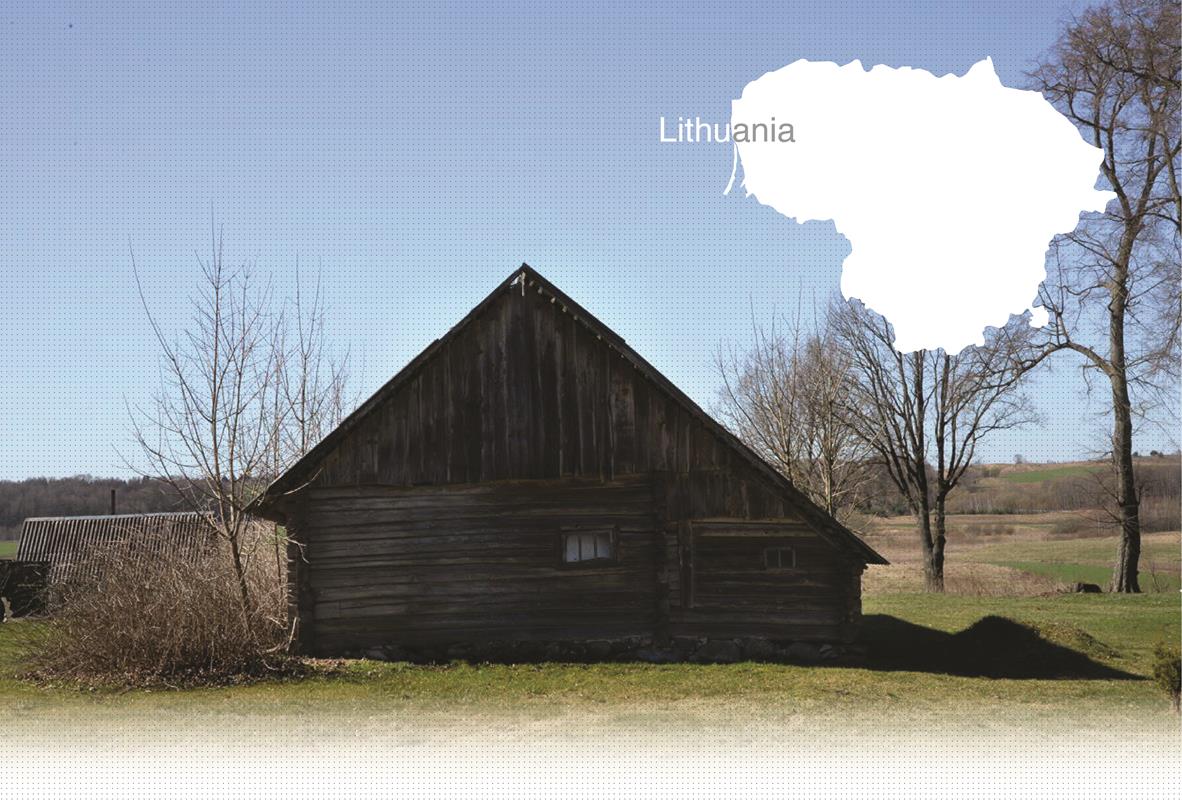

1 Killing site(s)
Leonas L., born in 1931, speaks: " Y.U.: Were there more people hiding in your house or just one Jewish woman?
Witness: At first this old lady was brought here, along with a 6-7 year old girl. That girl survived and lives in Israel now. She testified that we hid her and therefore my parents and my aunt were rewarded. [...]
Y.U.: How long were they hiding here?
Witness: That girl stayed here for about 3 weeks. She had to be very quiet, she had to calmly sit or lie down all the time, it was very unsafe. Then she stayed with another family. I have a document proving that. [...]
Y.U.: Where exactly did she hide?
Witness: She hid were the sofa is now.
There was a wall made from planks here and a door at the where you are sitting now. There was no step and a gap like this. It was very dangerous, they could have found her. We told her to pretend to be mute if this happened.
Y.U.: Did they hide here before or after the shooting?
Witness: After the shooting. There were no Jews left in Žagarė. She was brought here after the shooting.
Y.U.: Did any of the Germans or your neighbors know about it?
Witness: Our neighbors knew, but they didn’t betray us. It was a good hiding place as we had German troops and officers visiting us every day. One of the men who shot the Jews lived in the neighborhood too. [...]
Y.U.: You’ve mentioned that your mother wrote a letter. Did the German officer have this letter when he came to take your mother to be shot?
Witness: The German officer told us that there was an official order to shoot my mother together with the Jews but he didn’t show a written proof.
Y.U.: Where you at home when this officer came to your house?
Witness: Yes, I was at home.
Y.U.: Did he knock at the door?
Witness: They didn’t knock, they just opened the door. The armed soldiers were the first ones to enter. They checked that there was no resistance. If they had found that woman and found out that she was Jewish, they would have executed our whole family and all the neighbors who came to visit us." (Eyewitness n°11, interviewed in Žagarė, on November 24, 2013)
"On the day of the Jewish New Year, in September 1941, the Žagarė Police requisitioned me to dig pits in the Park of Culture together with 120-130 other people. We worked for two days. On the third day, just before lunchtime, German partisans of Lithuanian origin started to bring the Jews in trucks from the market place to the pits. The trucks were full. The Jews got out of the trucks, undressed completely and lined up near the pit in groups. Some had to lie down at the edge of the pit. After that they were shot with submachine guns and rifles." [Deposition of eyewitness Jonas Labanovich, born in 1886, Lithuanian origin, tinsmith; RG-22.002M.7021-94/436]
"As the first trucks were full of bodies and wounded Jews, there were others with Jews still alive, men, women, children and the elderly among them. The Jews brought to the park had to get down from the trucks about 30m away from the pit and had to undress until they were in their underwear or even completely. Afterwards the Jews were pushed into the pit in little groups and shot. They were shot by soldiers wearing the uniform of the former Lithuanian army. […] German soldiers in green uniform stayed standing around the killing site. One German was inside the pit firing at the Jews with a short automatic gun. […] 3.000 Jews were shot in the town park of Žagare." [Deposition of a digger Kasis J., born in 1903; B162-7264]
Žagare is situated 64 kilometers (40 miles) north of Šiauliai. Before the Second World War 40% of population were Jewish, about 1,928 people. The town was occupied by German army at the end of June, 1941.
Most of the persecution against the Jews was carried out by Lithuanian nationalists. The closed ghetto was created at the end of July/beginning of August, 1941. By the end of August, all the Jews from Šiauliai, Joniškis, Kuršėnai, Žeimelis and other surroundings had been forced to move to the ghetto. By September there were 2,402 Jews in Žagarė. At the end of August, 1941, the first group of 38 Jewish men was shot in the Jewish cemetery by local police and activists, headed by police chief Juozas K. On October 2, 1941 the liquidation of the ghetto was conducted by a self-defence unit, which had arrived from Šiauliai, and the activists of Linkuva squad. During this action, which lasted two days, 2,236 Jews were killed.
Do you have additional information regarding a village that you would like to share with Yahad ?
Please contact us at contact@yahadinunum.org
or by calling Yahad – In Unum at +33 (0) 1 53 20 13 17